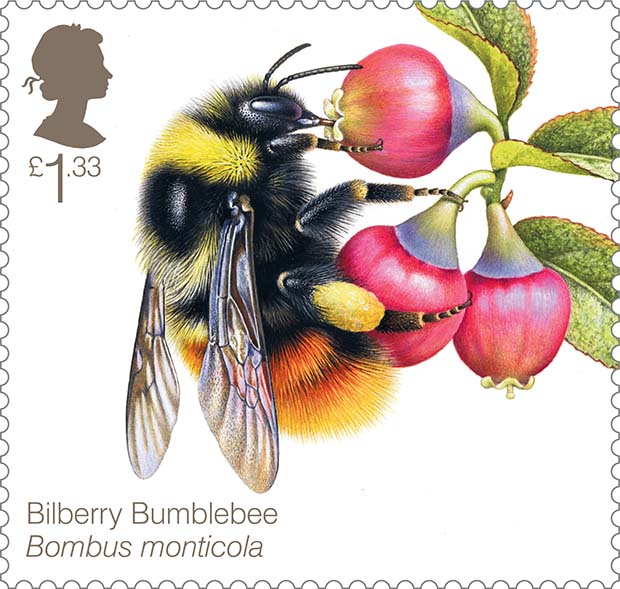Spring is an important period for bumble bees, as that’s when new colonies get their start. When a solitary bumble bee queen emerges from hibernation, she initiates a nest and then does the foraging work herself, until her first offspring hatch, develop into workers, and relieve her from all duties but egg laying. Thus, should any harm befall the queen in this early period, it can have ripple effects on the health of the developing colony.
According to a new study published last week in Environmental Entomology, queens of the bumble bee species Bombus impatiens that encounter the neonicotinoid insecticide imidacloprid in that foraging period show delayed nest initiation and brood emergence—if they survive the exposure at all.
Researchers at the University of Minnesota conducted an experiment in which they exposed B. impatiens queens to imidacloprid at levels between 1 and 25 parts per billion (ppb) in a sugar syrup, to “reflect a typical flower bloom period during which bees may become exposed to neonicotinoids when foraging on contaminated nectar and pollen in the environment.” They then measured how many queens survived, how long they took to start a nest, and how many eggs they laid.
Queens treated with the insecticide at 1, 10, and 25 ppb died in greater numbers, and sooner, compared to untreated queens (though no significant difference was found at the 5 ppb treatment level). Meanwhile, though untreated queens began laying eggs between 13 and 20 days after the experiment began, queens exposed to imidacloprid were slower to begin their nests, some taking several weeks longer, “which suggests a possible dose-dependent delay and recovery by queens once exposure ended,” according to the authors of the study, Judy Wu-Smart, Ph.D., a doctoral candidate at the University of Minnesota at the time of the study and now an assistant professor and extension specialist at the University of Nebraska-Lincoln, and Marla Spivak, Ph.D., distinguished McKnight professor at Minnesota.
Wu-Smart says she and Spivak were surprised to see that some of the queens (35 percent) died at the lowest exposure level, 1 ppb. “Previous studies with bumble bees examined the impacts of neonics on worker bees and or queenless microcolonies of bumble bees. In these studies, low doses, such as the 1 ppb we used, did not cause mortality in worker bees as it did in our study on queens, indicating that queens may be more susceptible than worker bumble bees,” says Wu-Smart.
Other studies have shown that the effect of neonicotinoids can vary from species to species, as well. “Therefore,” Wu-Smart says, “non-target risk assessments for pesticides need to consider species- and caste-specific differences when measuring toxicological impacts on physiological and behavioral responses.”
Pesticides are among a variety of contributing factors to declining bee populations in North America. Wu-Smart says the results of this research further underline the importance of minimizing non-target exposure of pesticides such as neonicotinoids.
“This study illustrates a particular time in the season, during spring nesting, in which reproductive queen bees may be more vulnerable to neonicotinoid exposure. Therefore, mitigation actions should focus on reducing exposure risk during this time,” she says.
Link to article:
https://academic.oup.com/ee/advance-article-abstract/doi/10.1093/ee/nvx…
Source: Entomology Today, December 19, 2017
https://entomologytoday.org/2017/12/19/bumble-bee-queens-slower-to-star…

- Login om te reageren
